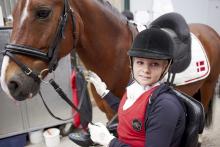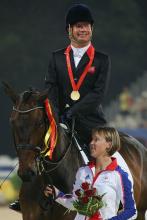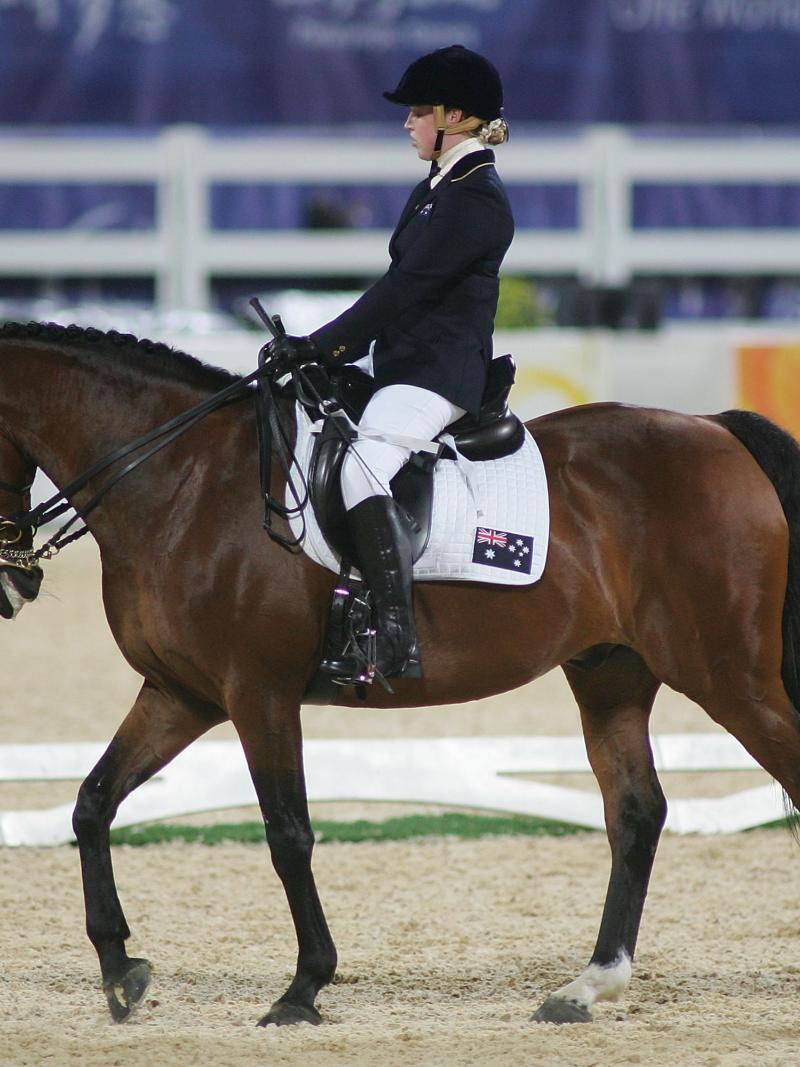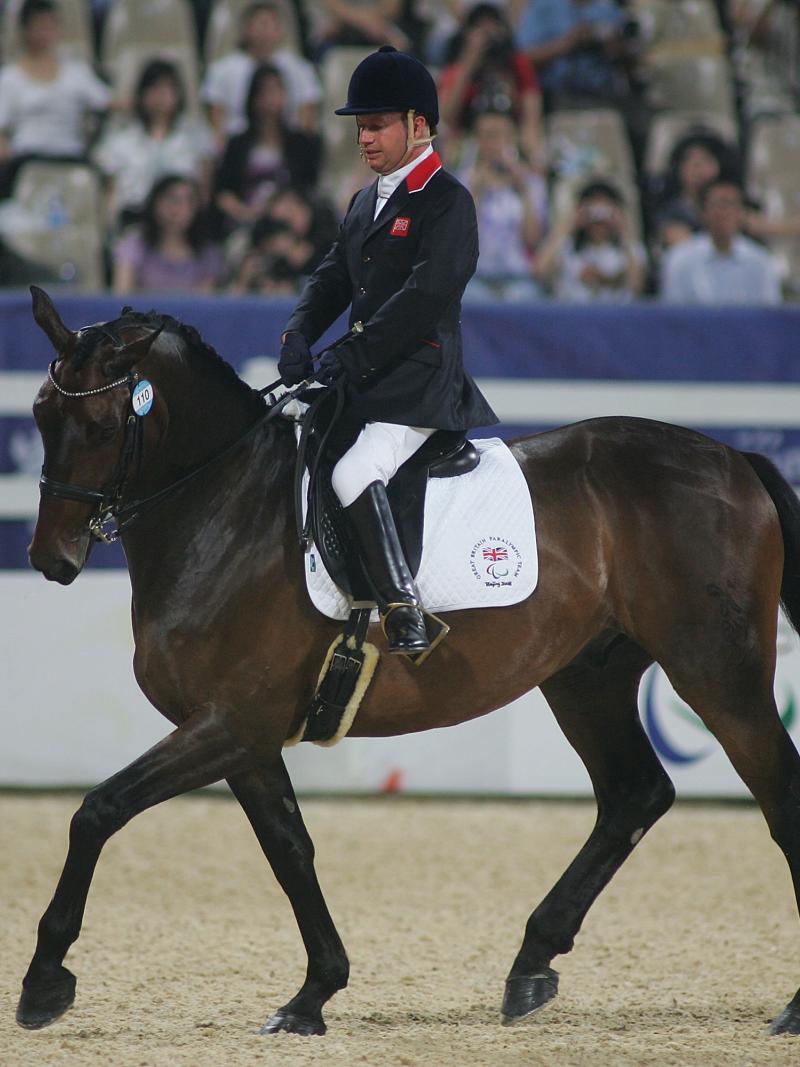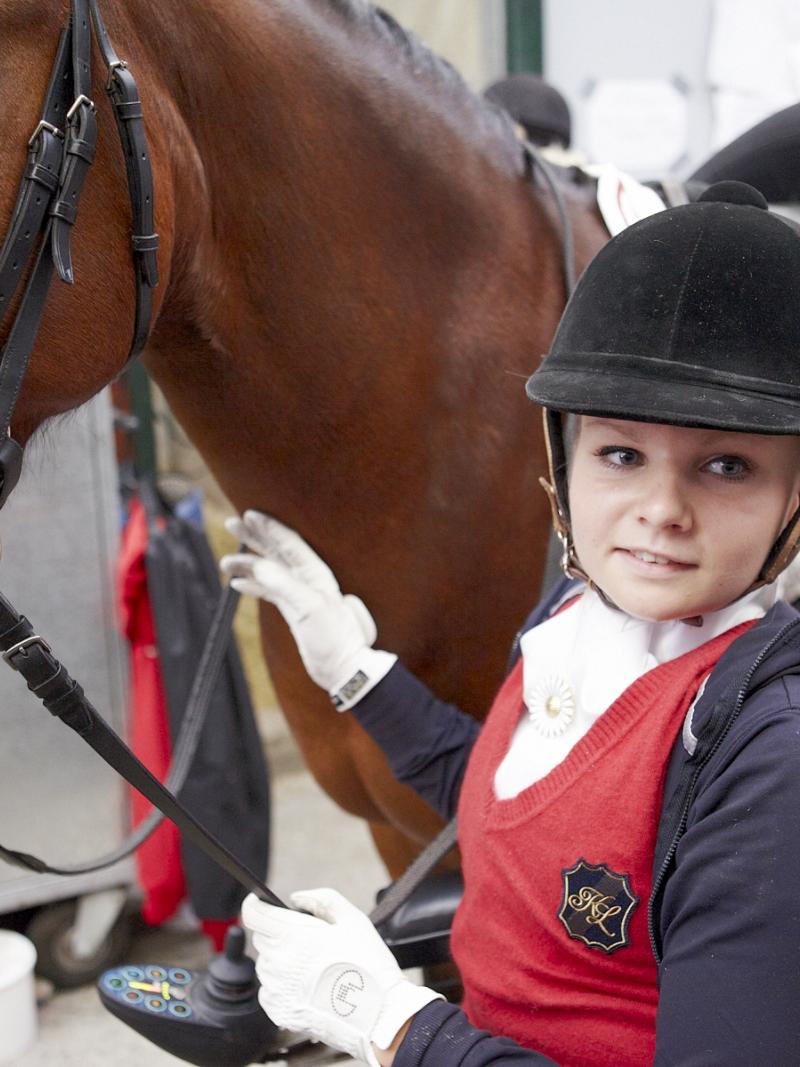Equestrian: 12 Facts for London 2012
Here’s a list of 12 interesting things you should know about Equestrian at the London 2012 Paralympic Games. 02 Jul 2012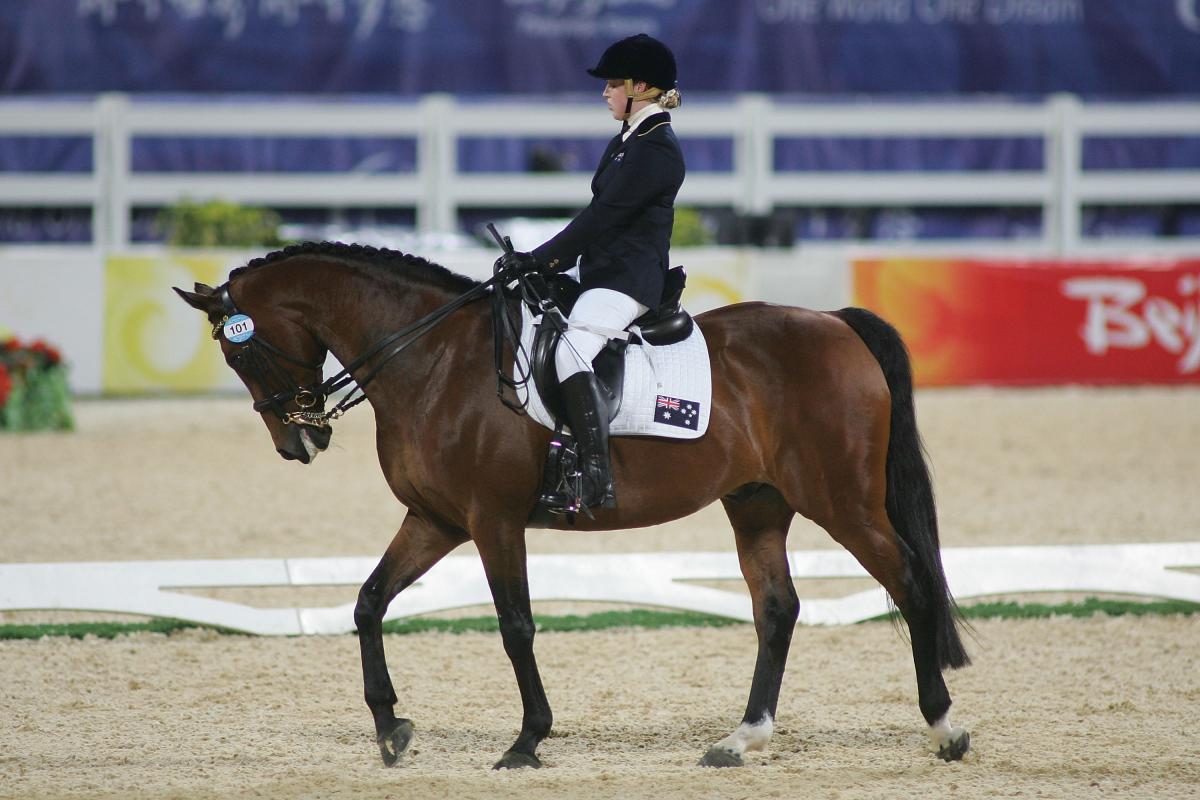
Grace Bowman from Australia with her horse YV MT Batton competes in the Paralympic Equestrian Individual Championship Test - Grades Ib event on September 9, 2008 in Hong Kong, China.
At the most recent Paralympic Summer Games in Beijing in 2008, Great Britain topped the Equestrian medal standings with five gold and 10 overall medals.
1. Who, what, when?
In London, 78 men and women will compete together across 11 Equestrian medal events from 30 August – 4 September.
2. Where?
All Equestrian events will take place at Greenwich Park, London’s oldest royal park that offers views across the River Thames to St. Paul’s Cathedral just 20 minutes outside the city centre.
3. Classification
Athletes are grouped in five different classes according to their functional ability. These include grades Ia, Ib, II, III and IV. In grade Ia, an athlete’s impairment has the greatest impact on his or her ability to ride, and in grade IV it has the least amount of impact on his or her ability to ride.
4. Original purpose
Equestrian was originally introduced as a means of rehabilitation and recreation for people with a disability, with the first para-dressage events being held in Great Britain and Scandinavia in the 1970’s.
5. History at the Games
Equestrian made its Paralympic debut at the Stoke Mandeville and New York 1984 Games and has been on every Paralympic programme since the Atlanta 1996 Games.
6. Dressage
At the Paralympics, dressage is the only Equestrian discipline athletes compete in. Horses and their riders are expected to perform series of predetermined movements in an arena and are assessed by a panel of judges.
7. Trio of events
Within the dressage discipline, athletes will compete in three events. A team test consists of three to four riders per team, and there will also be an individual championship test, and a freestyle test for which athletes choose their own movements and music.
8. Assistance
Equestrian riders are permitted to use assistive devices such as dressage crops and connecting rein bars. Visually impaired riders can use callers to help them navigate around the arena.
9. Vocabulary
Canter: A steady, controlled gait when three of the horse’s legs are off the ground at once.
Full-pass: When a horse moves sideways, bent in the direction of the movement.
Half-pass: When a horse moves forward and sideways simultaneously, bent in the direction of the movement.
Self-carriage: When a horse moves in balance without support from the reins.
10. Ones to Watch
• Lee Pearson: Great Britain’s top rider won three golds at each of the past three Paralympics and will finally have the chance to compete on the big stage in his home country.
• Stinna Tange Kaastrup: The Danish 17-year-old, born without legs, is hoping to use her 2011 world title in the grade 1b class as momentum for London 2012.
11. Beijing 2008
At the most recent Paralympic Summer Games in Beijing in 2008, Great Britain topped the Equestrian medal standings with five gold and 10 overall medals. The British were followed by Germany and South Africa.
12. World No. 1
Austria’s Pepo Puch is currently the highest ranked rider on the FEI Paralympic Athletes Individual Ranking list going into London 2012.






